#Djhwty
Text
The Golden Serpent
A hymn of healing
Through the eye of the forgotten oneI see thee splitting the serpent’s tongue“Get back!” I say“You shall not harm me this day!”I melt away in the serpents’ embraceAnd let them carry me into their graceSerpentine healing carries me awayI fight to live another dayDeep in the desert a golden mamba would appearSlithering gracefully under warm grains of sandHe spoke to me softly as…
View On WordPress
#book of shadows#Djhwty#healing#hyum#isis#kemetic#Kemeticism#magic#occult#satanic#satanic ritual#Satanism#Sekhmet#serpent#Serpentine#snake#spell#spell book#warlock#witch#witchcraft#wizard
2 notes
·
View notes
Photo

Extraordinary reconstruction of one of Hatshepsut's statues 𓂙𓏏𓏭𓀾 “ḫnty”, with the excavators literally holding her face 𓁷𓏤 “ḥr” together. Rather evocative of reconstructing the female king. Among the projects implemented in this year's 𓆳𓊪𓏏𓏤 “rnp.t” spring mission in the temple 𓉞𓏏𓉐 “ḥw.t” is the reconstruction of one of the sphinx statues that once adorned the processional alley leading to the temple of Hatshepsut in Deir el-Bahari 𓇋𓏠𓈖𓂦𓂦𓉐𓅱 “ḏsr-ḏsr.w-ı͗mm” ‘The sacred of the most sacred of Amun. Originally, there were more than 70 𓎌 such figures along the alley, being a combination of a lion's 𓃭𓏪 “rw.w” body 𓄡𓏏𓏤 “ẖ.t” and a human head with features of a queen's face. During the reign of Thutmoses Ill, (𓅝𓄟𓊃𓄤𓆣𓏫) “djhwty-ms-hprw” ‘Thutmoses (Born of Thoth), Beautiful of Forms’ shortly after the death 𓅓𓏏𓀐 “m(w)t” of the female pharaoh 𓉐𓉼 “pr-ˁ3” ‘Great House’, all the sculptures depicting Hatshepsut (𓇋𓏠𓈖𓎸𓏏𓄂𓏏𓀼𓏪) “imn-ẖnmt ḥA.t-šps.wt” ‘United with Amun, Foremost of Nobel Ladies’ were destroyed 𓂝𓐍𓅓𓈗𓀜 “ˁḫm” to remove any traces of her reign. The figures, broken into thousands of pieces, were then buried, allowing their polychromia to remain in exceptionally good condition. Especially remarkable is the color scheme of the queen's face, which refers to the canon according to which the female body was painted yellow 𓏘𓈖𓇋𓏏𓏬 “qni.wt”. 📸 @ Kara Cooney - Egyptologist (Facebook) 𓋹𓎬𓋹𓎬𓋹𓎬𓋹𓎬𓋹𓎬𓋹𓎬𓋹𓎬𓋹𓎬𓋹𓎬𓋹𓎬𓋹𓎬𓋹𓎬𓋹𓎬𓋹𓎬𓋹𓎬𓋹𓎬 @egyptologylessons 𓋹𓊽𓋴𓆖𓎛𓇳𓎛 © 𓊁𓊁𓊁𓊁𓊁𓊁𓊁𓊁𓊁𓊁𓊁𓊁𓊁𓊁𓊁𓊁𓊁 #Ancientegypt #ägypten #egyptianhistory #egyptology #hieroglyphs #egypte #egitto #埃及 #مصر #egipto #이집트 #hatshepsut #reconstruction #excavation #archeology https://www.instagram.com/p/CdF4wuSuQ4D/?igshid=NGJjMDIxMWI=
#ancientegypt#ägypten#egyptianhistory#egyptology#hieroglyphs#egypte#egitto#埃及#مصر#egipto#이집트#hatshepsut#reconstruction#excavation#archeology
15 notes
·
View notes
Photo
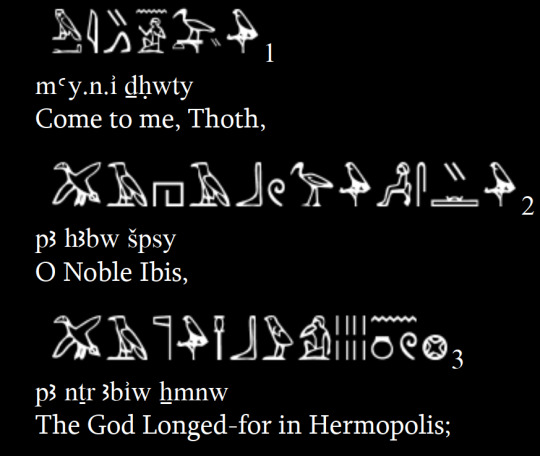
Scribe'sPrayerToThoth-BB.pdf
Full Text in link Below
https://www.academia.edu/35114033/ScribesPrayerToThoth-BB.pdf
123 notes
·
View notes
Text
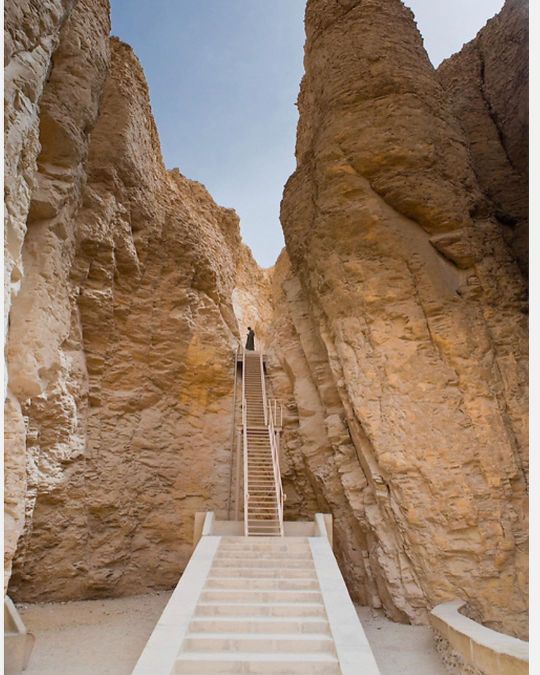
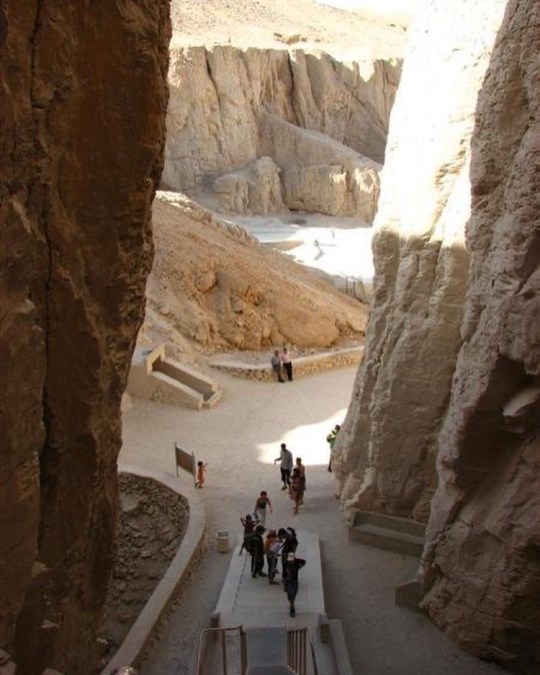
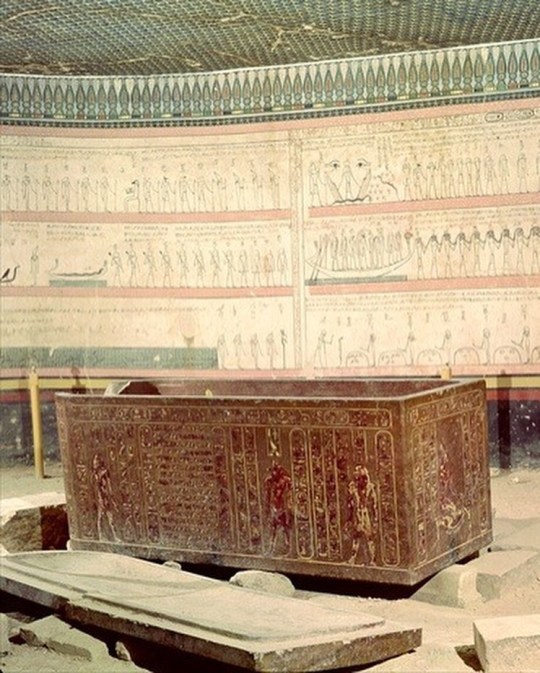
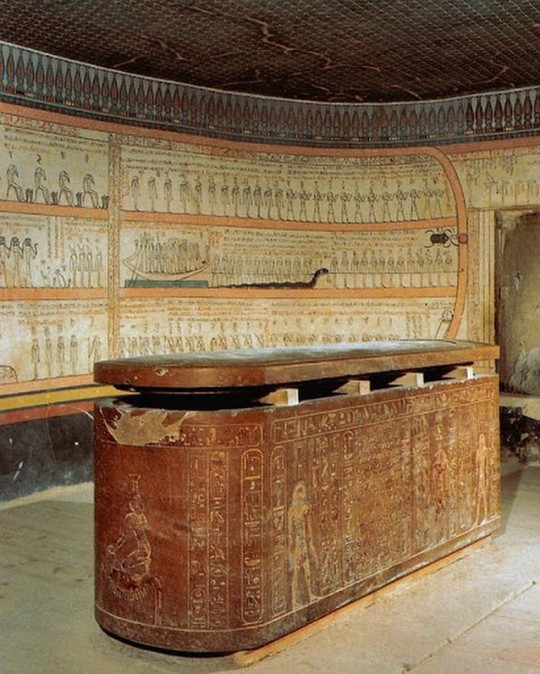
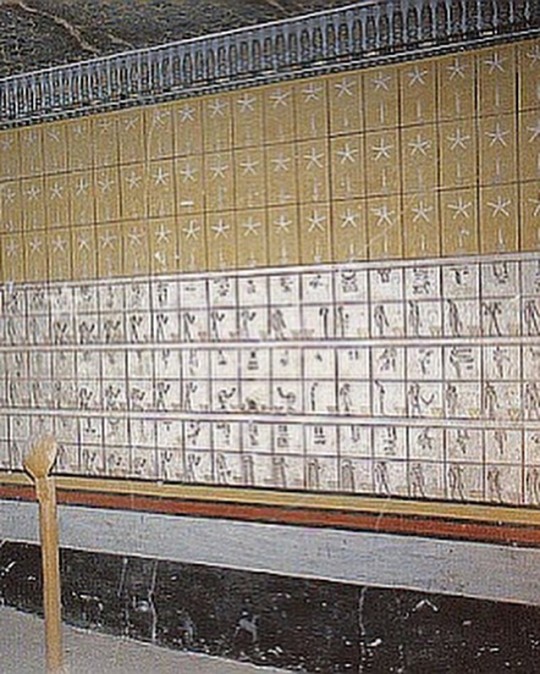



Tomb KV34 in the Valley of the Kings (near the modern-day Egyptian 𓂋𓐝𓎀𓀂𓀭𓏪 “rmṯ” city of Luxor) was the tomb of 18th dynasty Pharaoh Thutmose III (𓅝𓄟𓊃𓄤𓆣𓏫) “djhwty-ms-hprw” ‘Beautiful are the Reincarnations of Thumoses.𓏤
One of the first tombs 𓂝𓂝𓇋𓉴 “ˁˁı͗” to be dug in the Valley, it was cut high in the cliff face of the furthermost wadi. A steep corridor leads down, in a dog-leg shape, from the entrance past a deep well to a trapezoidal antechamber. Beyond the antechamber lies the cartouche-shaped burial 𓈎𓂋𓋴𓌟𓏏𓊭 “krs” chamber, off which stand four smaller side chambers. The stone sarcophagus in which Thutmose's body 𓄡𓏏 “ẖ.t” was placed is still in place in the burial chamber, albeit damaged by tomb robbers.
Many of the wall decorations are in an unusual style not found elsewhere in the Valley of the Kings. On a yellow 𓏘𓈖𓇋𓏏𓏬 “qni.wt” - tinged background (intended to resemble aged papyrus 𓂝𓂋𓏏𓍼𓏜 “er.t”), the earliest known version of the Amduat 𓅓𓇼𓂧𓄿𓏏 “m-dw3.t” ‘In the Duat’ is traced, depicting the gods of Ancient Egypt - Beloved Land 𓇾𓌸𓂋𓆵𓇋𓊖𓊖 “tA-meri” as simple (almost naive) stick figures, in papyrus writing style. The Litany of Ra 𓂋𓂝𓁜 “rˁ” also appears in the burial chamber, with a similar execution. (Also, on the way up the staircase to the tomb, you can see on the cliff wall graffiti done by the workmen building the tomb.) The tomb was plundered in antiquity and its location lost. It was rediscovered and first excavated in 1898 under Victor Loret.𓏤
Source: https://en.m.wikipedia.org/wiki/KV34
#Egypt #egyptian #ancient #ancientegypt #hieroglyphics #ägypten #thisisegypt #egyptologist #myegypt #egyptianhistory #egyptology #archeology #hieroglyphs #madeinegypt #egypte #egyptians #egyptshots #loveegypt #discoveregypt #egitto #埃及 #مصر #egipto #thutmosesiii #pharaoh #valleyofthepharaohs #tomb #sarcophagus
174 notes
·
View notes
Photo

Limestone ushabti of Djhwty-Nefer. Artist unknown; ca. 1550-1350 BCE (18th Dynasty, New Kingdom). Now in the Los Angeles County Museum of Art. Photo credit: LACMA.
#art#art history#ancient art#Egypt#Ancient Egypt#Egyptian art#Egyptian religion#shabti#ushabti#18th Dynasty#New Kingdom#sculpture#figurine#limestone#stonework#carving#Los Angeles County Museum of Art#LACMA
31 notes
·
View notes
Photo

Swivel Bezel Ring of Thutmose III Gold 𓋞 “nbw” finger-ring: with a solid-cast rectangular swivel-bezel inscribed on one face 𓁷𓏤 “hr” with prenomen/throne name of Thutmose III (𓅝𓄟𓊃𓄤𓆣𓏫) “djhwty-ms-hprw” ‘Beautiful are the Reincarnations of Thumoses’.𓏤 The Epithet Reads: 'Menkhperra (𓇳𓏠𓆣) ‘Established is the Manifestation of Ra’, beloved 𓌸𓇌 “mri” of Ptah 𓎛𓊪𓏏 “pth” beautiful 𓄤 “ nfr” of face 𓁷𓏤 “hr”.𓏤 The verso has the Two Ladies 𓅒 “nbty” name 𓂋𓈖 “rn” of the king: ‘Great 𓉻 “eA” of Majesty 𓄅𓏏 “šfit” in 𓅓 “m” all 𓎟𓏬 “nb.w” the lands 𓇾𓇾𓇾 “tAw”.𓏤 Excavated/Findspot: Saqqara, This ring formed part of the burial 𓈎𓂋𓋴𓌟𓏏𓊭 “krs” assemblage of Djehuty 𓅝𓏏𓏭 “DHwty”, whose tomb 𓇋𓂝𓂝𓉴 “ia” was discovered in the 1820s. 𓎬𓋹𓎬𓋹𓎬𓋹𓎬𓋹𓎬𓋹𓎬𓋹𓎬𓋹𓎬𓋹𓎬𓋹𓎬𓋹𓎬𓋹𓎬𓋹𓎬𓋹𓎬𓋹𓎬𓋹𓎬𓋹𓎬𓋹𓎬𓋹𓎬𓋹𓎬𓋹𓎬𓋹𓎬𓋹 FUN FACT: You can still see the red wax inside the three dots, which the pharaoh used his ring to seal a papyrus letter! 𓎬𓋹𓎬𓋹𓎬𓋹𓎬𓋹𓎬𓋹𓎬𓋹𓎬𓋹𓎬𓋹𓎬𓋹𓎬𓋹𓎬𓋹𓎬𓋹𓎬𓋹𓎬𓋹𓎬𓋹𓎬𓋹𓎬𓋹𓎬𓋹𓎬𓋹𓎬𓋹𓎬𓋹𓎬𓋹 Dimensions: Length: 1.85 centimetres (bezel)Width: 1.6 centimetres (bezel)Diameter: 2.95 centimetres (ring #Tutankhamun ⠀⠀⠀⠀⠀⠀ #egypt #ancientegypt #pharaohs #egyptian#äegypten #egyptology #wondersofegypt#ancient #archeology #middleeast#madeinegypt #hyeroglyphs #jewellery#Egipto #antiguoegipto #faraones#egipcios #egiptologia #antiguedades#arqueologia #jeroglificos #momias#kemet #loveegypt #thisisegypt #myegypt#egyptianhistory #tutankhamon https://www.instagram.com/p/B8QE2vZhPzc/?igshid=e14co5dphgt8
#tutankhamun#egypt#ancientegypt#pharaohs#egyptian#äegypten#egyptology#wondersofegypt#ancient#archeology#middleeast#madeinegypt#hyeroglyphs#jewellery#egipto#antiguoegipto#faraones#egipcios#egiptologia#antiguedades#arqueologia#jeroglificos#momias#kemet#loveegypt#thisisegypt#myegypt#egyptianhistory#tutankhamon
0 notes
Photo

#MrRiggs making #powermoves with all the family going into #2019 as it’s the future #legacy for are 5 #Generation as we begin to make a purpose for are youth #nubeginning #blackicetv7 #hkthbaby #TheCORE @manhoodacademywest ・・・ . 🇺🇸🇬🇧 :Doctor of Classical Naturopathy-Hygienic Science; Grand Master of the KeMetaphysical Sciences; Master teacher, Author & Global Healer, Holistic Health teacher.Dr. Phillip Valentine, DCN; DHS; DMpS aka: Hry Snw Djhwty Sa Khw-Ra Mhtp #drphillvalentine With the great diplomat and business man @MrRiggs. 🚀As we shift into 2019 . . 🙏🏾In tradition we restart with the blessings of Manhood Academy expansion to West London. From our Elders & Leaders in the Community . . 🇬🇧London+New York🇺🇸. Manhood Academy Programme in New York 🌍. Watch this Space... @manhoodacademy @manhoodacademywest #love❤️ and #unity✊🏿 (at Alhambra Ballroom) https://www.instagram.com/p/BsDwF9GgWa9/?utm_source=ig_tumblr_share&igshid=1t0upkoe1l5m6
#mrriggs#powermoves#2019#legacy#generation#nubeginning#blackicetv7#hkthbaby#thecore#drphillvalentine#love❤️#unity✊🏿
0 notes
Text
Thoth and Maat: contemplations
Reading about Thoth and Maat. Thoth, as a word, comes from the Greek reading of the Egyptian hieroglyphics. Mcavity from tarotforum has an excellent explanation here: http://www.tarotforum.net/library/16/2003-08/how-do-you-pronounce-thoth-20030816.shtml The hieroglyphics did not write out vowels, and the sounds of "djwhty" (dj wh ty) recorded apparently come out as something like theta-omega-theta in Greek, which in English became th o th. From Wikipedia: Djehuty is sometimes alternatively rendered as Jehuti, Tahuti, Tehuti, Zehuti, Techu, or Tetu. Thoth (also Thot or Thout) is the Greek version derived from the letters ḏḥwty. Thoth as a concept is the pursuit of knowledge, the impulse towards art, scholarship, information and the pursuit of balance. (I will think of his name as Thought. It seems appropriate.) Ma'at has somewhat less controversy over her name. She is balance. She is the universal law. The laws of physics, the laws of thermodynamics, the laws we live by. She is the order by which the universe runs- she is what science tries to explain, she is the understanding Thoth encourages us to pursue. She was thought by the Egyptians to be a goddess who encouraged tradition over innovation. A sorry contradiction, since science is about change- the willingness to change personally when your theories are wrong and the ability to recognize change in the universe. Nothing remains the same within our stars.
1 note
·
View note
Text
You're Not Safe
December 8th, 2023
I was walking through a dimly lit museum with Redbird and pulling up tales for him to read about my astral journeys with my twin brother JJ for him to read off of vepuei.com. He read a dream about JJ and me fighting a demon guarding a dungeon in hell.
“I still don’t believe you,” He said, referring to JJ’s existence. “What happens next?”
We walked to the next post and began…

View On WordPress
#Ancient Egyptian#Ancient egyptian gods#Ancient Egyptian language#Astral Plane#astral realm#astral twin#bf#danger#deception#Djhwty#dream#dream diary#dream journal#dream server#god#godkin#gods#godsona#jack the ripper#JJ#jj ombra#mdw ntr#myth#mythology#nightmare#original character#past life#ra#red bird#redbird
0 notes
Photo

Statue of Seti I This statue 𓂙𓏏𓏭𓀾 “ḫnty”, depicting Seti I Seti I (𓊪𓏏𓎛𓁣𓇌𓌸𓈖) “stḥy mri.n-ptḥ” ‘Seti, beloved of Ptah’, kneeling to dedicate offerings 𓏛𓏏𓊪 “ḥtp” to Osiris 𓊨𓁹 or 𓁹𓊩 “wsir” and other gods 𓊹𓊹𓊹 “nṯrw” of the Thinite nome 𓊡𓅨𓂋𓊖 “t3-wr”, was probably one of the group he planned for the temples 𓉞𓉐𓏏 “ḥw.t” that he built at Abydos 𓍋𓃀𓈉𓊖 “3bḏw”. The facial features of the piece echo and further refine those of the great 𓉼𓂝𓄿 “ˁ3” or 𓅨𓂋 “wr” Dynasty 18 ruler Thutmose III (𓅝𓄟𓊃𓄤𓆣𓏫) “djhwty-ms-hprw” ‘Beautiful are the Reincarnations of Thutmoses (Born of Thoth)’. The high quality exhibited by this statue is typical of the art and architecture of the reign of Seti I. Portions of the head 𓁷𓏤 “ḥr” and torso are restored. Period: Dynasty 19, reign of Seti I (ca. 1294-1279 B.C.) Medium: Black granite 𓋹𓎬𓋹𓎬𓋹𓎬𓋹𓎬𓋹𓎬𓋹𓎬𓋹𓎬𓋹𓎬𓋹𓎬𓋹𓎬𓋹𓎬𓋹𓎬𓋹𓎬𓋹𓎬𓋹𓎬𓋹𓎬 📸 @egyptologylessons 𓋹𓊽𓋴𓆖𓎛𓇳𓎛 © (@metmuseum and description) 𓊁𓊁𓊁𓊁𓊁𓊁𓊁𓊁𓊁𓊁𓊁𓊁𓊁𓊁𓊁𓊁𓊁 #ancientegypt #hieroglyphics #ägypten #egyptianhistory #egyptology #pto #이집트 https://www.instagram.com/p/CbvR0Ogu4qx/?utm_medium=tumblr
26 notes
·
View notes
Photo

The Great Sphinx of Giza, dating from the reign of King Khafre (𓇳𓈍𓆑) “ḫ3-f-rˁ” ‘He Appears as Ra’ (ca. 2570 BC), with the Dream Stele below of Thutmose IV (𓈍𓅝𓄟𓋴𓈍𓏫) “djhwty-ms-he.w” ‘Thoth is Born, Radiant of Crowns’ The Dream Stele Legend: Thutmose IV (1397-1388 BC), whose name 𓂋𓈖 “rn” means, "Born of the God Thoth" was one of those who received a message from the gods 𓊹𓊹𓊹 “nTrw” in his dream 𓂋𓋴𓅱𓏏𓌘𓁹 “rsw.t”. It happened one day when he was hunting trip. He was tired and decided to rest in the shadow 𓆄𓋺𓅱𓏏 “šw.t” near the great Sphinx Sphinx 𓎛𓅱𓃭𓏤 “hw” or 𓊏𓊪𓃭 “šsp”. The monument was buried in sand at the time 𓊃𓊪𓊗 “sp”. Thutmose IV fell asleep and in his dream he was visited by the Sun God Re-Horakhty 𓂋𓂝𓇳𓏤𓅃𓈌𓏏𓏭 “rˁ-ḥrw-3ḫty” ‘Horus of the Two Horizons’ was embodied in the Sphinx. Thutmose IV was promised that if he would clear away the sand 𓈙𓂝𓏭𓏸𓏫 “šˁy” that engulfed the monument 𓏠𓏍 “mnw”, he would become king of Egypt: Black Land - Kemet 𓆎𓅓𓏏𓊖 “kmt” OR Red Land - Deshret 𓂧𓈙𓄿𓅟𓈉 “dšrt” OR Beloved Land - Tameri 𓇾𓌸𓂋𓆵𓇋𓊖𓊖 “tA-meri”.𓏤 #egypt #egyptian #ancient #ancientegypt #hieroglyphics #pharaoh #middleeast #worldtourismday #thisisegypt #egyptologist #temple #myegypt #egyptianhistory #egyptology #archeology #hieroglyphs #madeinegypt #egypte #egyptians #egyptshots #loveegypt #discoveregypt #ruins #sphinx #dreamstele #thutmoseiv #stele #khafre https://www.instagram.com/p/CTRqi1yriGz/?utm_medium=tumblr
#egypt#egyptian#ancient#ancientegypt#hieroglyphics#pharaoh#middleeast#worldtourismday#thisisegypt#egyptologist#temple#myegypt#egyptianhistory#egyptology#archeology#hieroglyphs#madeinegypt#egypte#egyptians#egyptshots#loveegypt#discoveregypt#ruins#sphinx#dreamstele#thutmoseiv#stele#khafre
110 notes
·
View notes
Photo
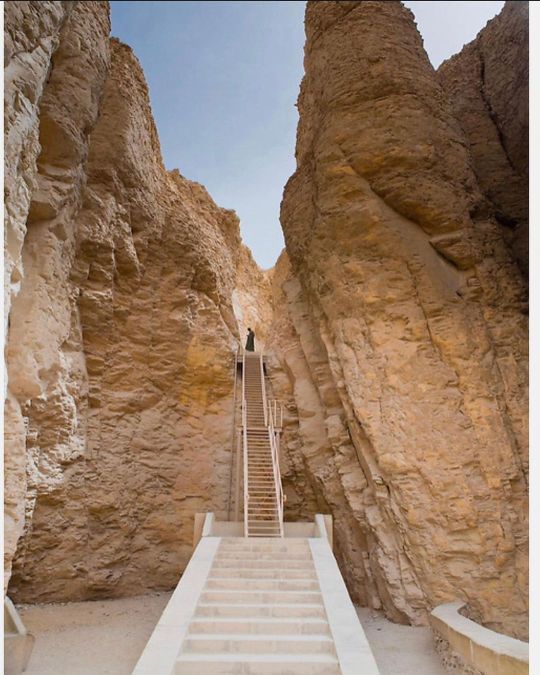
Tomb KV34 in the Valley of the Kings (near the modern-day Egyptian 𓂋𓐝𓎀𓀂𓀭𓏪 “rmṯ” city of Luxor) was the tomb of 18th dynasty Pharaoh Thutmose III (𓅝𓄟𓊃𓄤𓆣𓏫) “djhwty-ms-hprw” ‘Beautiful are the Reincarnations of Thumoses.𓏤 One of the first tombs 𓂝𓂝𓇋𓉴 “ˁˁı͗” to be dug in the Valley, it was cut high in the cliff face of the furthermost wadi. A steep corridor leads down, in a dog-leg shape, from the entrance past a deep well to a trapezoidal antechamber. Beyond the antechamber lies the cartouche-shaped burial 𓈎𓂋𓋴𓌟𓏏𓊭 “krs” chamber, off which stand four smaller side chambers. The stone sarcophagus in which Thutmose's body 𓄡𓏏 “ẖ.t” was placed is still in place in the burial chamber, albeit damaged by tomb robbers. Many of the wall decorations are in an unusual style not found elsewhere in the Valley of the Kings. On a yellow 𓏘𓈖𓇋𓏏𓏬 “qni.wt” - tinged background (intended to resemble aged papyrus 𓂝𓂋𓏏𓍼𓏜 “er.t”), the earliest known version of the Amduat 𓅓𓇼𓂧𓄿𓏏 “m-dw3.t” ‘In the Duat’ is traced, depicting the gods of Ancient Egypt - Beloved Land 𓇾𓌸𓂋𓆵𓇋𓊖𓊖 “tA-meri” as simple (almost naive) stick figures, in papyrus writing style. The Litany of Ra 𓂋𓂝𓁜 “rˁ” also appears in the burial chamber, with a similar execution. (Also, on the way up the staircase to the tomb, you can see on the cliff wall graffiti done by the workmen building the tomb.) The tomb was plundered in antiquity and its location lost. It was rediscovered and first excavated in 1898 under Victor Loret.𓏤 Source: https://en.m.wikipedia.org/wiki/KV34 #Egypt #egyptian #ancient #ancientegypt #hieroglyphics #ägypten #thisisegypt #egyptologist #myegypt #egyptianhistory #egyptology #archeology #hieroglyphs #madeinegypt #egypte #egyptians #egyptshots #loveegypt #discoveregypt #egitto #埃及 #مصر #egipto #thutmosesiii #pharaoh #valleyofthepharaohs #tomb #sarcophagus https://www.instagram.com/p/CTMrw3xrAsD/?utm_medium=tumblr
#egypt#egyptian#ancient#ancientegypt#hieroglyphics#ägypten#thisisegypt#egyptologist#myegypt#egyptianhistory#egyptology#archeology#hieroglyphs#madeinegypt#egypte#egyptians#egyptshots#loveegypt#discoveregypt#egitto#埃及#مصر#egipto#thutmosesiii#pharaoh#valleyofthepharaohs#tomb#sarcophagus
37 notes
·
View notes
Photo
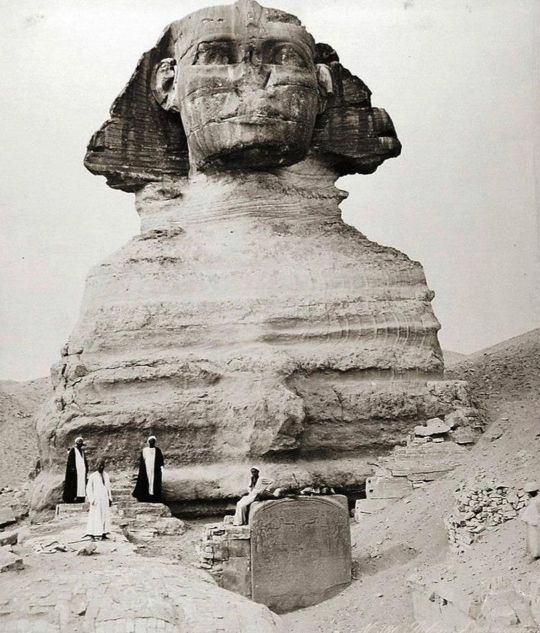
The rare vintage photograph of the Great Sphinx of Giza (Arabic: أبو الهول, English: The Terrifying One; literally: Father of Dread and in Ancient Greek: Σφίγξ.).𓏤 Sphinx 𓎛𓅱𓃭𓏤 “hw” or 𓊏𓊪𓃭 “šsp” of Giza or just the Sphinx, is a limestone 𓇋𓈖𓂋𓊌𓈖𓂝𓈖𓁼𓊌 “inr-n-einw” statue of a reclining sphinx, a mythical creature with the body of a lion 𓃭 and the head 𓁶 of a human.𓏤 Facing directly from West 𓋀 to East 𓋁, it stands on the Giza Plateau on the west bank of the Nile 𓈗 in Giza, Egypt - Beloved Land - Tameri 𓇾𓌸𓂋𓆵𓇋𓊖𓊖 “tA-meri”. The face of the Sphinx is generally believed to represent the Pharaoh 𓉐𓉼 “pr-eA” (Great House) from the Old Kingdom, Khafre (𓇳𓈍𓆑) c. 2558–2532 BC.𓏤 I front of the Sphinx is the famous Dream Stela 𓎘𓅱𓆓𓉸 “wdj”, also called the Sphinx Stele, is an epigraphic stele erected between the front paws of the Great Sphinx 𓎛𓅱𓃭𓏤 “hw” or 𓊏𓊪𓃭 “šsp” of Giza by the Ancient Egyptian 𓂋𓐝𓎀𓀂𓀭𓏪 “rmT” Pharaoh 𓉐𓉼 “pr-eA” ‘Great House’ Thutmose IV (𓈍𓅝𓄟𓋴𓈍𓏫) “djhwty-ms-he.w” (𓇳𓏠𓆣𓏫) “mn-hprw-re”.𓏤 𓋹𓎬𓋹𓎬𓋹𓎬𓋹𓎬𓋹𓎬𓋹𓎬𓋹𓎬𓋹𓎬𓋹𓎬𓋹𓎬𓋹𓎬𓋹𓎬𓋹𓎬𓋹𓎬𓋹𓎬𓋹𓎬 Follow: @egyptologylessons 𓋹𓊽𓋴𓆖𓎛𓇳𓎛 𓊁𓊁𓊁𓊁𓊁𓊁𓊁𓊁𓊁𓊁𓊁𓊁𓊁𓊁𓊁𓊁𓊁 #egypt #egyptian #ancient #ancientegypt #hieroglyphics #ägypten #worldtourismday #thisisegypt #egyptologist #temple #myegypt #egyptianhistory #egyptology #archeology #hieroglyphs #madeinegypt #egypte #egyptians #egyptshots #loveegypt #discoveregypt #ruins #sphinx #greatsphinx #giza #cairo #cairoegypt #pharaoh #vintageegypt https://www.instagram.com/p/CXMWCekr2NV/?utm_medium=tumblr
#egypt#egyptian#ancient#ancientegypt#hieroglyphics#ägypten#worldtourismday#thisisegypt#egyptologist#temple#myegypt#egyptianhistory#egyptology#archeology#hieroglyphs#madeinegypt#egypte#egyptians#egyptshots#loveegypt#discoveregypt#ruins#sphinx#greatsphinx#giza#cairo#cairoegypt#pharaoh#vintageegypt
17 notes
·
View notes
Photo
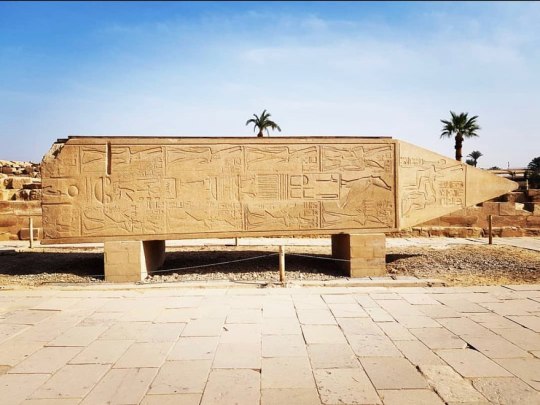
The Broken Obelisk of Hatshepsut (𓇋𓏠𓈖𓎸𓏏𓄂𓏏𓀼𓏪) “imn-ẖnmt ḥA.t-šps.wt” ‘United with Amun, Foremost of Nobel Ladies’ at the Karnak Temple - Sacred Lake Precinct Karnak Temple Sacred-Lake 𓈙𓏤𓂦𓂋𓏜 “š-ḏsr” is the largest of its kind and was dug by Tuthmosis III (𓅝𓄟𓊃𓄤𓆣𓏫) “djhwty-ms-hprw” ‘Thutmose (Born of Thoth), Beautiful of Forms’ (1473-1458 BC). It measures 393 feet (120m) by 252 feet (77m) and is lined with stone wall and has stairways descending into the water 𓈗 “mw” The lake was used by the priests 𓍛𓊹 “ẖm-nṯr” for ritual washing and ritual navigation. It was also home to the sacred geese 𓊃𓂋𓅬𓏪 “srw.w” of Amun 𓇋𓏠𓈖𓁩 “ı͗mn” (the goose being another symbol of Amun) and was a symbol of the primeval waters 𓅮𓄿𓏲𓏏𓏖𓈗 “pAwty” from which life 𓋹𓈖𓐍 “ˁnḫ” arose in the ancient Egyptian’s 𓂋𓐝𓎀𓀂𓀭𓏪 “rmṯ” idea of creation. Source: https://discoveringegypt.com/karnak-temple/karnak-temple-sacred-lake/ 𓋹𓎬𓋹𓎬𓋹𓎬𓋹𓎬𓋹𓎬𓋹𓎬𓋹𓎬𓋹𓎬𓋹𓎬𓋹𓎬𓋹𓎬𓋹𓎬𓋹𓎬𓋹𓎬 Follow: @egyptologylessons 𓋹𓊽𓋴 𓊁𓊁𓊁𓊁𓊁𓊁𓊁𓊁𓊁𓊁𓊁𓊁𓊁𓊁𓊁 #Egypt #egyptian #ancient #ancientegypt #hieroglyphics #ägypten #thisisegypt #egyptologist #myegypt #egyptianhistory #egyptology #explore #hieroglyphs #madeinegypt #egypte #egyptians #egyptshots #loveegypt #discoveregypt #egitto #埃及 #مصر #egipto #explorepage #lake #karnak #beforeandafter https://www.instagram.com/p/CSFAg5jryVp/?utm_medium=tumblr
#egypt#egyptian#ancient#ancientegypt#hieroglyphics#ägypten#thisisegypt#egyptologist#myegypt#egyptianhistory#egyptology#explore#hieroglyphs#madeinegypt#egypte#egyptians#egyptshots#loveegypt#discoveregypt#egitto#埃及#مصر#egipto#explorepage#lake#karnak#beforeandafter
32 notes
·
View notes
Photo

Libation Vessel of Manuwai𓏤 Manuwai 𓅓𓂟𓏌𓍯𓇋𓁐 “mˁnwoı͗” was one of three 𓏼 minor wives 𓈞𓏏𓏪 “hm.wt” of Thutmose III (𓅝𓄟𓊃𓄤𓆣𓏫) “djhwty-ms-hprw” ‘Beautiful are the Reincarnations of Thutmoses (Born of Thoth)’ whose names 𓂋𓈖𓏫 “rn(w)” suggest that they came from western 𓋀𓏏𓈊 “ı͗mn.t” Asia. When these 𓇒 “nn” non-Egyptian women 𓁐𓏪 “s.wt” died 𓅓𓏏𓀐 “m(w)t”, they were mummified 𓊃𓂝𓎛𓋩𓀻 “zˁḥ” and buried 𓈎𓂋𓋴𓌟𓏏𓊭 “krs” with the same equipment one would expect to find the tomb 𓂝𓂝𓇋𓉴 “ˁˁı͗” of a native Egyptian 𓂋𓐝𓎀𓀂𓀭𓏪 “rmT” queen 𓇓𓈞𓏏 “sw-hm.t”. Among 𓅓𓅓𓂟 “mm” other things 𓐍𓏏𓏜𓏪 “ḫtw” each was provided with a silver 𓋠 “ḥḏ” canister like this one, which is similar in shape to a type of libation 𓇋𓃀𓎛𓈗𓀆 “ı͗bhw” vessel, but has no spout. The inscription on this vessel reads: "Given as a blessing of the King to the King's Wife 𓇓𓈞𓏏 “sw-hm.t”, Manuwai, justified." The foreign name can be seen in the column of text on the left written phonetically in hieroglyphs 𓌃𓂧𓅱𓀁𓊹 “mdw-ntr” (divine writing). Period: New Kingdom, Dynasty 18. Reign of Thutmose III (ca. 1479–1425 B.C.). From Egypt, Upper Egypt, Thebes, Wadi Gabbanat el-Qurud, Wadi D, Tomb of the 3 Foreign Wives of Thutmose III. Medium: Silver Dimensions: H. 19.5 cm (7 11/16 in.); Diam. 13 cm (5 1/8 in.); Width of mouth: 3 cm (1 1/4 in.). Photo and details from the Metropolitan Museum. 𓋹𓎬𓋹𓎬𓋹𓎬𓋹𓎬𓋹𓎬𓋹𓎬𓋹𓎬𓋹𓎬𓋹𓎬𓋹𓎬𓋹𓎬𓋹𓎬𓋹𓎬𓋹𓎬𓋹𓎬𓋹𓎬 Follow: @egyptologylessons 𓋹𓊽𓋴𓆖𓎛𓇳𓎛 𓊁𓊁𓊁𓊁𓊁𓊁𓊁𓊁𓊁𓊁𓊁𓊁𓊁𓊁𓊁𓊁𓊁 #egypt #egyptian #ancient #ancientegypt #hieroglyphics #ägypten #thisisegypt #egyptologist #myegypt #egyptianhistory #egyptology #archeology #hieroglyphs #madeinegypt #egypte #egyptians #egyptshots #loveegypt #discoveregypt #egitto #埃及 #مصر #egipto #egytianlibation #egyptianpurification #thutmoseiii #manuwai #silvervessel https://www.instagram.com/p/CW8PcNOLqTE/?utm_medium=tumblr
#egypt#egyptian#ancient#ancientegypt#hieroglyphics#ägypten#thisisegypt#egyptologist#myegypt#egyptianhistory#egyptology#archeology#hieroglyphs#madeinegypt#egypte#egyptians#egyptshots#loveegypt#discoveregypt#egitto#埃及#مصر#egipto#egytianlibation#egyptianpurification#thutmoseiii#manuwai#silvervessel
12 notes
·
View notes
Photo
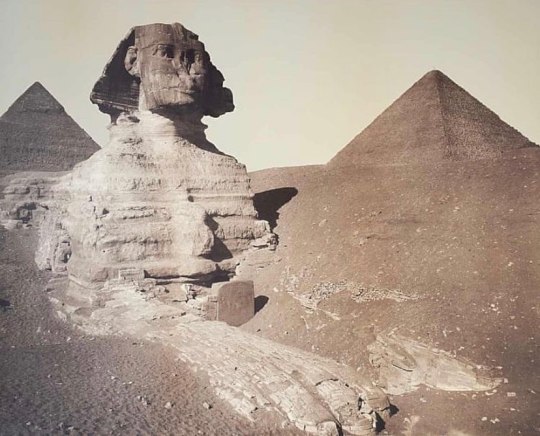
The rare vintage photograph of the Great Sphinx of Giza (Arabic: أبو الهول, English: The Terrifying One; literally: Father of Dread and in Ancient Greek: Σφίγξ.).𓏤 The sphinx captured here, is as mythic as ever, but the inevitable repairs seem to have made it somehow less mysterious. It is also, of course, not the same statue you will encounter on a visit to the once-uncrowded site. That sphinx is gone, its lone, towering, almost ominous presence sacrificed to the relentless demands of mass tourism (A. Welson & Co. (Boston), 1889. Mammoth photomechanical print).𓏤 Sphinx 𓎛𓅱𓃭𓏤 “hw” or 𓊏𓊪𓃭 “šsp” of Giza or just the Sphinx, is a limestone 𓇋𓈖𓂋𓊌𓈖𓂝𓈖𓁼𓊌 “inr-n-einw” statue of a reclining sphinx, a mythical creature with the body of a lion 𓃭 and the head 𓁶 of a human.𓏤 Facing directly from West 𓋀 to East 𓋁, it stands on the Giza Plateau on the west bank of the Nile 𓈗 in Giza, Egypt - Beloved Land - Tameri 𓇾𓌸𓂋𓆵𓇋𓊖𓊖 “tA-meri”. The face of the Sphinx is generally believed to represent the Pharaoh 𓉐𓉼 “pr-eA” (Great House) from the Old Kingdom, Khafre (𓇳𓈍𓆑) c. 2558–2532 BC.𓏤 In front of the Sphinx is the famous Dream Stela 𓎘𓅱𓆓𓉸 “wdj”, also called the Sphinx Stele, is an epigraphic stele erected between the front paws of the Great Sphinx 𓎛𓅱𓃭𓏤 “hw” or 𓊏𓊪𓃭 “šsp” of Giza by the Ancient Egyptian 𓂋𓐝𓎀𓀂𓀭𓏪 “rmT” Pharaoh 𓉐𓉼 “pr-eA” ‘Great House’ Thutmose IV (𓈍𓅝𓄟𓋴𓈍𓏫) “djhwty-ms-he.w” (𓇳𓏠𓆣𓏫) “mn-hprw-re”.𓏤 #egypt #egyptian #ancient #ancientegypt #hieroglyphics #ägypten #worldtourismday #thisisegypt #egyptologist #temple #myegypt #egyptianhistory #egyptology #archeology #hieroglyphs #madeinegypt #egypte #egyptians #egyptshots #loveegypt #discoveregypt #ruins #sphinx #greatsphinx #giza #cairo #cairoegypt #pharaoh #vintageegypt https://www.instagram.com/p/CNA9RvAri5z/?igshid=6xawjfdirskk
#egypt#egyptian#ancient#ancientegypt#hieroglyphics#ägypten#worldtourismday#thisisegypt#egyptologist#temple#myegypt#egyptianhistory#egyptology#archeology#hieroglyphs#madeinegypt#egypte#egyptians#egyptshots#loveegypt#discoveregypt#ruins#sphinx#greatsphinx#giza#cairo#cairoegypt#pharaoh#vintageegypt
15 notes
·
View notes